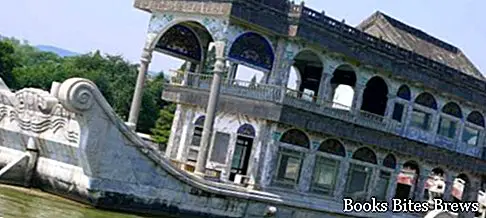What to see in Beijing, the capital of China located between the steppe, mountains and plains, an itinerary including the main places of interest, including the famous forbidden city.
Tourist information
Beijing, Beijing in Chinese which means capital of the north, is the capital of the People's Republic of China.
It is located in the north-eastern part of the country between the Yanshan mountains and the Mongolian steppe in the north, the Gulf of Bohai in the east, the Taihang mountains in the west and the beginning of the vast Chinese agricultural plain in the south.
The city is a huge urban area that occupies a very large area.
With the arrival of a large mass of people from the countryside, a conspicuous phenomenon of urbanization occurred which made it necessary to build new buildings for residential and collective use, so the city with a horizontal extension has transformed and has taken on a vertical dimension, where modern skyscrapers predominate.
In ancient times the city had a square plan and was divided into nine square sectors, each of which corresponding to a ninth of the total area.
According to ancient Chinese thought this was the ideal city scheme, still partially recognizable today in this fascinating city that preserves important architectural and artistic heritage, testimonies of distant civilizations.
What see
Forbidden City
It is the Imperial Palace, an imposing complex of pavilions, courtyards, corridors, places of worship and gardens dating back to the fifteenth century, which have been
home of the emperors of the Ming and Qing dynasties. Today it houses a vast collection of priceless finds, including paintings, ancient ceramics and bronzes. The site is included in the list of UNESCO World Heritage Sites.
Beihai park
Beihai park is among the most beautiful and popular places in Beijing, where groups of people, generally quite mature, gather to do various outdoor activities. The lake of the same name covers almost half of its surface, and is a place where it is customary to go skating in winter or take romantic boat trips in summer. Through an ancient bridge you reach the Jade Flowers island, where at the highest point stands the white Dagoba Temple, an imposing stupa-shaped structure which is accessed through a shady path and rock stairs.
Drum Tower and Bell Tower
The Drum Tower, built in the 13th century in the geographical center of the ancient Mongolian capital of Dadu, was destroyed and restored several times over the following centuries. The tower drums dating back to the Ming dynasty were used to mark the hours of the day. The tower offers a splendid view of Beijing and the surrounding alleys. Near the Drum Tower stands the Bell Tower built under the Ming, but the current structure dates back to the eighteenth century as the original was destroyed by fire.
Hutong alleys
The heart of old Beijing are the Hutong, ancient and suggestive alleys that survived the urban transformation of the city. A very fascinating destination, a glimpse of the old lifestyle of the Pekingese, to be explored on foot or by bicycle, whose characteristic element is the siheyuan, traditional walled courtyard houses. The most characteristic areas are the alleys around the drum and bell towers, Lake Houhai and Nanluoguxiang.
- Hong Kong: useful tourist information
- China: useful information
- Beijing: what to see in the forbidden city
- Great Wall of China: where it is, length km
- Chinese New Year: lantern festival
Jingshan
Jingshan Park, originally an imperial garden, today a public park, extends over an artificial hill located north of the Forbidden City, from its top you can admire a splendid panorama over the golden roofs of the imperial palaces.
Lama Temple
It is the largest temple in Beijing, built at the end of the 17th century, and consists of a series of pavilions connected by courtyards. In the farthest room there is the statue made from a single sandal tree, 18 meters high, which represents the Maitreya Buddha.
Summer Palace
On the north-western outskirts of the city, on the shores of Lake Kunming and dominated by the Longevity Hill, there is a beautiful complex of buildings and gardens used by the royal court as a summer residence. The site is included in the list of UNESCO World Heritage Sites.
Temple of Heaven park
It is the largest imperial park in Beijing, surrounded by a wall where four doors open at the cardinal points. The focal point of the park is the main building from which the park takes its name, the Temple of Heaven, the highest expression of Ming architecture. Originally this place had been conceived as a large altar facing the sky and was therefore used by the emperor to perform ceremonial rites to ask the gods for a good harvest.The temple of heaven has been included in the list of UNESCO World Heritage Sites.
Tiananmen Square
It is an immense square, where Mao Zedong declared the foundation of the People's Republic, and since 1989 it has become a symbol of the suppression of student protests.




